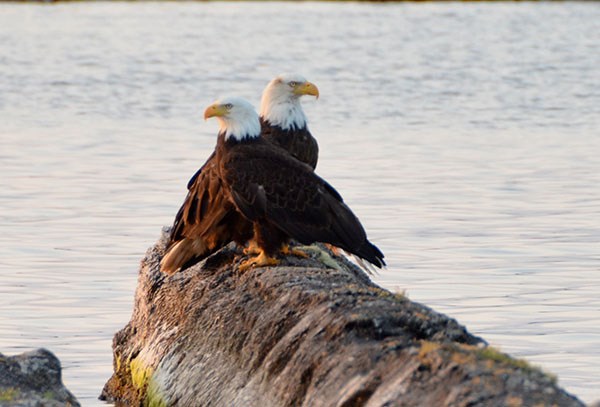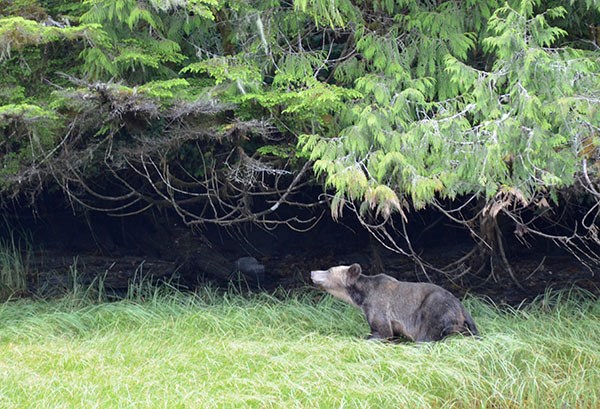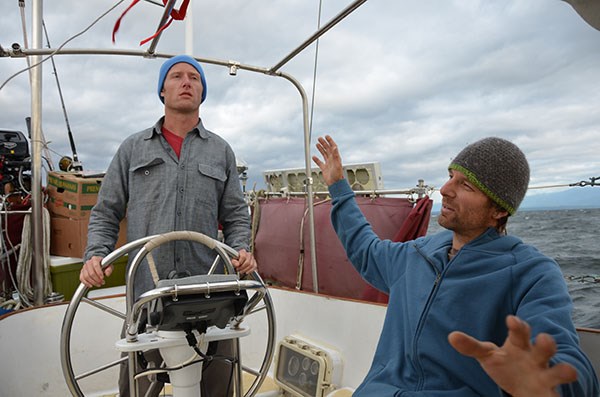Last March, Squamish residents received a graphic lesson in ecological resilience when 200 Pacific white-sided dolphins splashed into Mamquam Blind Channel with a pod of transient orcas in cruel pursuit. Neither species had visited our neighborhood for decades, and their dramatic reappearance (based, in turn, on the reappearance of herring, which lured the dolphins to the trap) marked a turning point: after serving as an industrial dump site for most of the twentieth century, Howe Sound’s waters are once again clean enough for top predators.
This is good news for everyone, with the possible exception of kiteboarders. But the bigger, better news is that this resilience is no isolated phenomenon. It seems incredible to say so in the 21st century, and it comes with some major caveats, but the fact is British Columbia’s coast is starting to recover from over a century of industrial abandon. The further north you go (that is, away from the heavily populated shipping lanes between Vancouver and southern Vancouver Island) the more evidence you’ll find that all a banged-up nature needs to recover her full glory is a little peace and quiet.
I saw this for myself when I sailed from Victoria to Kitimat two summers ago. That journey was originally conceived as an exploration of Northern Gateway’s proposed oil tanker routes; my friend, a photographer named Ilja Herb, had recently bought a sailboat, and although neither of us had sailed a day in our lives we decided not to let that stop us from investigating a part of Canada that everyone seemed to be talking about, but few people had actually visited. That place was the Great Bear Rainforest, which begins north of Vancouver Island, stretches to Alaska (including Haida Gwaii), and covers seventy thousand square kilometres of fjords, straits, and evergreen islands. These are the waters through which over 225 oil tankers a year would navigate should Northern Gateway become a reality.
We enlisted a third friend, Squamish local and longtime sailor Zach Hyde, to help us get there. Zach skippered us up the east coast of Vancouver Island, teaching us the essentials of navigation in the two (terrifyingly short) weeks we had him. As we made north through a cool early July, we watched the land and seascape around us grow wilder: fewer lights on shore at night, fewer boats in the water by day, more dolphins, more orcas, better fishing. But it wasn’t until we reached the northern tip of Vancouver Island and crossed Queen Charlotte Strait; entering the Great Bear Rainforest itself that we understood what true ecological abundance looks like. Over the next three months, it came to feel like we were on a Canadian safari on par with anything I’ve seen in places like the Amazon basin or the African savannah.

Pick a species, any species.
In Bella Bella, home of the Heiltsuk Nation and our first stop, we learned about the resurgence of herring, which had all but disappeared from the central coast by the 1970s. These days, the bays of the Heiltsuk and their neighbors once again turn milky white each spring with the herring spawn, and coastal First Nations can finally enjoy their traditional delicacy of herring-roe-on-kelp.
Know what eats herring? Just about everything bigger than a herring – but nothing eats more of them than humpback whales, which had also disappeared from our coast by the 1960s. Today, humpbacks summer in the Great Bear Rainforest in ever-greater numbers, feeding on herring and other small fish and practising their songs in the rock-walled underwater canyons that offer the best acoustics a whale could ask for. We learned this at a science station called Cetacealab. Built on the southern tip of Gil Island in 2002, the scientists who run Cetacealab counted 42 humpbacks in the surrounding waters their first summer; a decade later, there are more than 300 humpbacks in the same area, with more showing up each year. We witnessed the unforgettable sight of bubble-net feeding, whereby humpbacks use blasts of air to corral herring schools into a tight ball, which the whales then gulp from below, erupting from the water just as their gaping, herring-filled maws slam shut.
Or consider the sea otter, yet another creature hunted almost to extinction, and which remains absent from southern B.C.’s coast. Throughout the Great Bear Rainforest, though, sea otters are returning in such numbers that they’re starting to compete with humans for shellfish consumption—arguably, a good problem to have.
In an ancient, unlogged watershed called Koeye, we anchored our sailboat and zoomed up the river in our dinghy to see if any of the grizzly bears we’d heard about were around. We saw six in two hours.
And all this was before the salmon started running.
Had we set sail twenty years ago, when the logging and fishing industries were at their height, we’d have seen many more boats and far fewer animals. The decline of industry has taken an undeniable human toll in British Columbia, but equally undeniable is the ecological rejuvenation this brief window of industrial calm has allowed.
And it will be brief. Northern Gateway is but one of a slew of energy projects slated for our coast, as British Columbians can’t stop hearing about these days. Tankers are coming, they will blare right through the middle of a fragile recovery, and who knows what their impact will be?
We can’t stop them all, and maybe we shouldn’t try. But when I listen to the debates over liquified natural gas and bitumen today, I often think back to one of the more memorable encounters from that sailing trip, one that involved our own species: a group of retirees from Alberta who we met in a gorgeous, seaside hotspring called Europa, a day’s sail from Kitimat. We chatted as we soaked, and inevitably the talk came around to Northern Gateway.
“We’re for it,” one of the men said. “Canada needs the money.”
“We all worked in a mine our whole lives,” another man added. “It never had a single environmental accident. Sometimes these things can work out, you know.”
He was right, of course. Sometimes accidents don’t happen. I said I agreed that we couldn’t say no to everything, but surely we could say no to some things? “Look where we are now,” I argued. “If there was a spill in Douglas Channel, the currents would wash that oil right into our laps.”
They nodded and smiled, and said without speaking that the world has other hot springs. I pressed the point no further, but I’ve wondered ever since: How do you convince someone that the same system which delivered prosperity all their lives can also deliver collapse?





